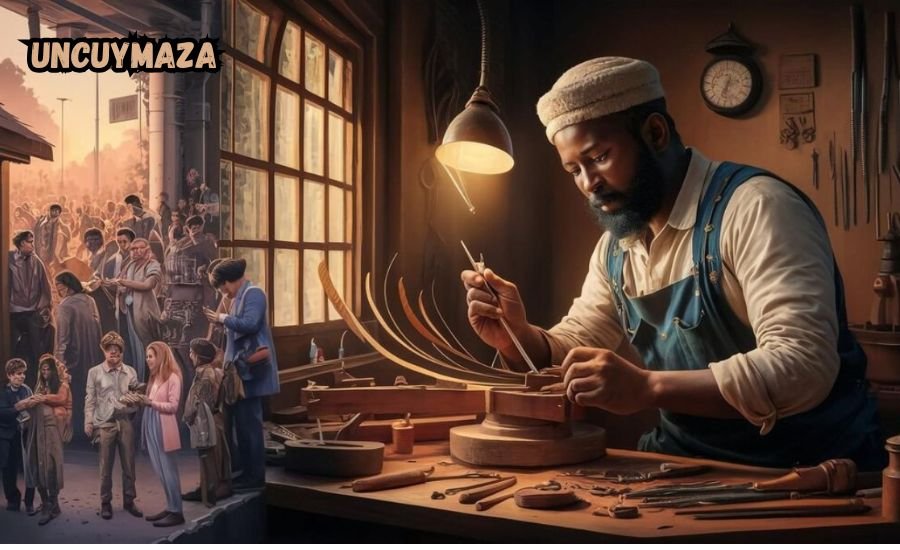Uncuymaza, an ancient Andean art form, carries with it a deep cultural legacy that speaks volumes about the beliefs, history, and traditions of indigenous communities. This intricate artistic expression, known for its vibrant colors, geometric patterns, and spiritual symbolism, has stood the test of time. But what exactly is uncuymaza, and why is it so important in preserving cultural identity?
As we delve into the world of uncuymaza, we will explore its historical roots, its symbolism, its role in education, and its continued influence in modern society. This art form is not just a relic of the past; it is an ever-evolving practice that resonates with people of all generations. From indigenous communities to modern-day art enthusiasts, uncuymaza continues to inspire and connect us to a rich cultural heritage that shapes our world today.
Overview of the Andean Tradition
The Andean culture is known for its strong connection to nature, spirituality, and community. Uncuymaza emerged as a unique artistic tradition within this context. Rooted in the ancient civilizations of the Andes, such as the Incas, uncuymaza represents a fusion of art, spirituality, and cultural storytelling. These intricate artworks, passed down through generations, tell tales of creation, cosmic harmony, and the relationship between humans and nature.
For centuries, uncuymaza has been used as a medium of expression, often incorporated into ceremonial rituals and spiritual practices. Its geometric designs, vibrant colors, and symbolic motifs have helped preserve indigenous worldviews, enabling modern generations to understand and appreciate the rich heritage of their ancestors. Uncuymaza serves as a living link to the past, a reminder of the deep cultural significance of the Andean people.
The Symbolism Behind Uncuymaza

Every piece of uncuymaza art is imbued with meaning, making it far more than just a decorative expression. The symbolism behind uncuymaza is deeply rooted in Andean cosmology, spirituality, and the natural world. Many of the designs feature animals, such as serpents and birds, which represent important spiritual forces. Birds often symbolize freedom and transcendence, while serpents evoke themes of creation, duality, and transformation.
The colors used in uncuymaza also carry significant meanings. Earthy tones such as browns and greens symbolize stability and connection to the land, while bright reds and yellows express vitality, energy, and spiritual power. The geometric patterns that define uncuymaza art reflect the balance and interconnectedness of all elements in the universe, illustrating the Andean belief that all aspects of life—spiritual, physical, and emotional—are deeply intertwined.
The Role of Uncuymaza in Education
Uncuymaza is not only an art form but also a powerful tool for cultural education. For generations, it has served as a medium through which indigenous communities pass down their traditions, stories, and values to younger generations. The importance of this art form in education cannot be overstated, as it helps preserve cultural identity and fosters a sense of pride and belonging.
Uncuymaza as a Cultural Learning Tool
In indigenous communities, uncuymaza plays a key role in education by teaching younger generations about their ancestral heritage. Through the art, children and young adults learn about the cosmology, history, and spiritual beliefs of their ancestors. This art form is often used as a visual representation of myths, rituals, and daily life, serving as a living textbook for passing down essential knowledge.
The intricate designs and stories embedded in uncuymaza also help teach valuable life lessons about harmony, balance, and respect for nature. The connection between art and education is not just about learning artistic techniques but also about understanding the deeper messages that are woven into each piece of uncuymaza. By preserving this tradition, future generations continue to connect with their cultural roots, ensuring that the wisdom of the past is not lost.
Educational Institutions Promoting Uncuymaza
Many educational institutions, both within Andean regions and globally, are recognizing the importance of uncuymaza in preserving indigenous knowledge. Workshops, art classes, and exhibitions are increasingly being organized to teach young people about this ancient art form. These initiatives not only aim to preserve the craft but also educate others about the rich cultural heritage of the Andean peoples.
Some institutions also focus on digital preservation, capturing the techniques and symbolism of uncuymaza through video tutorials and online resources. This helps ensure that the art form is accessible to a wider audience, beyond those who live in traditional Andean communities. Through these efforts, the tradition of uncuymaza continues to thrive in modern educational contexts, allowing for both preservation and innovation.
Uncuymaza in Modern Society

Uncuymaza, once primarily an expression of indigenous identity and spirituality, has found a new life in modern society. The resurgence of interest in this art form is not just a nod to the past but also a way to connect with contemporary values and issues. As global interest in indigenous cultures grows, uncuymaza has gained recognition as an important cultural treasure that deserves to be preserved and appreciated.
The Cultural Resurgence of Uncuymaza
In recent years, there has been a cultural resurgence of interest in uncuymaza, with many indigenous artists reviving traditional techniques and creating new works inspired by the ancient art form. This resurgence is part of a larger movement to reclaim indigenous cultures and assert cultural identity in the face of globalization. Uncuymaza has become a symbol of resilience, a reminder of the strength of indigenous communities and their ability to adapt while staying true to their cultural roots.
Modern artists are also experimenting with uncuymaza, blending traditional designs with contemporary styles and materials. This fusion allows for the evolution of the art form while maintaining its cultural significance. Whether through murals, sculptures, or digital art, uncuymaza continues to find new ways to speak to audiences today, fostering a deeper appreciation for indigenous cultures worldwide.
Global Interest and Preservation Efforts
As interest in indigenous art grows, there has been a concerted effort to preserve and protect uncuymaza. International organizations, art institutions, and indigenous groups are working together to safeguard the integrity of uncuymaza while also promoting its cultural and educational value. These efforts include documenting uncuymaza works, supporting artisans, and advocating for the protection of intellectual property rights related to the art form.
In addition to preservation efforts, there is growing recognition of the role that uncuymaza plays in promoting intercultural dialogue and understanding. By sharing the beauty and significance of uncuymaza with the world, we are not only preserving a unique art form but also fostering greater respect for indigenous cultures and their contributions to global heritage.
I hope this is useful to you: Antarvacna
Uncuymaza: Art, Symbolism, and Legacy
Uncuymaza stands as a testament to the artistic, spiritual, and cultural richness of the Andean people. It encapsulates centuries of knowledge, tradition, and creativity, offering a glimpse into a worldview that continues to inspire and influence contemporary art. At its core, uncuymaza is not just an art form; it is a spiritual practice, a cultural treasure, and a legacy that transcends time.
Spiritual Connections in Uncuymaza Art
The spiritual depth of uncuymaza art is perhaps one of its most striking features. The intricate designs and vibrant colors are not just decorative elements but are imbued with profound spiritual meanings. Each pattern, each symbol, tells a story of connection to the divine, to nature, and to the cosmos. For the Andean people, the creation of uncuymaza art is a sacred act, a way of honoring the forces of the universe and seeking balance between the physical and spiritual realms.
Uncuymaza art often features depictions of animals, plants, and celestial bodies, all of which are seen as manifestations of divine power. The use of geometric patterns in the artwork reflects the Andean belief in the interconnectedness of all things. These symbols are not just artistic choices but serve as a reminder of the spiritual forces that govern life and the universe.
The Ongoing Influence of Uncuymaza in Contemporary Art
While uncuymaza is rooted in ancient traditions, its influence continues to be felt in the world of contemporary art. Modern artists, both in the Andean region and beyond, draw inspiration from the geometric patterns, vibrant colors, and spiritual symbolism of uncuymaza. Some artists use uncuymaza as a way to reconnect with their indigenous heritage, while others incorporate its motifs into their works as a way of celebrating cultural diversity.
The continued relevance of uncuymaza in contemporary art speaks to its enduring power as a symbol of identity, resilience, and cultural pride. Whether through visual art, fashion, or design, uncuymaza remains an important part of the global artistic conversation, offering a powerful reminder of the beauty and significance of indigenous cultures.
Conclusion
Uncuymaza is more than just an art form; it is a cultural, spiritual, and educational legacy that continues to inspire and connect people around the world. Rooted in the ancient traditions of the Andean people, uncuymaza embodies the values, beliefs, and stories of a rich cultural heritage that deserves to be preserved and celebrated. As we move forward, it is essential that we continue to honor the legacy of uncuymaza, ensuring that its symbolism, beauty, and spiritual depth are passed down to future generations.
By understanding and appreciating uncuymaza, we not only gain insight into the rich history of the Andean people but also strengthen the bonds of intercultural respect and understanding. Whether through its role in education, its resurgence in modern society, or its ongoing influence in contemporary art, uncuymaza remains a powerful reminder of the enduring legacy of indigenous cultures.
FAQs
Q: What is Uncuymaza?
A: Uncuymaza is an ancient Andean art form that blends spiritual symbolism and cultural heritage, using vibrant colors and geometric patterns to tell stories and connect with nature.
Q: What does Uncuymaza symbolize?
A: Uncuymaza symbolizes deep connections to nature, spirituality, and the cosmos. Its designs often reflect natural elements and cosmic order, making each piece a narrative of harmony and balance.
Q: Where does Uncuymaza originate from?
A: Uncuymaza originates from indigenous communities in the Andean region of South America, where it has been passed down through generations as a means of cultural and spiritual expression.
Q: How is Uncuymaza created?
A: Uncuymaza is created using traditional techniques, including weaving, painting, and embroidery. Each piece is carefully designed with vibrant colors and intricate geometric patterns to convey spiritual messages.
Q: What role does Uncuymaza play in education?
A: Uncuymaza serves as an educational tool to teach younger generations about cultural traditions, spiritual values, and the importance of preserving ancestral knowledge.
Q: Is Uncuymaza relevant today?
A: Yes, Uncuymaza is experiencing a cultural resurgence, with contemporary artists incorporating it into modern works while preserving its traditional meanings. It is celebrated globally for its rich heritage.
Q: How can I learn more about Uncuymaza?
A: To learn more about Uncuymaza, you can explore museums, attend workshops, or visit galleries that showcase traditional and modern interpretations of this art form.
Don’t miss out on more blogs from Rizz Lines
